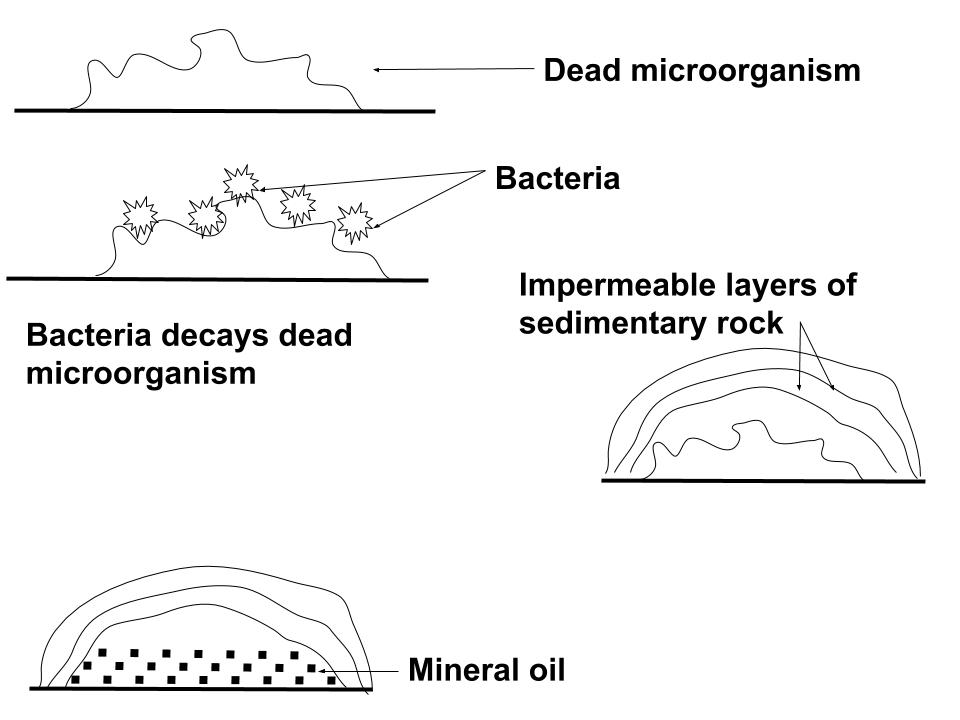E-cikai
Past Papers Solutions
SEE Science
National PABSON
Secondary Education Examination Board
SEE Pre Board Examination-2078
Compulsory Science
Time: 2 hours 15 minutes
Full Marks: 75
Answer all the questions.
Group A
1. Write short answer of the following questions.
15 × 1 = 15
a.
State Newton's universal law of gravitation.
Newton’s universal law of gravitation states that every body in the universe attracts every other body with a force which is directly proportional to the product of their masses and inversely proportional to the square of the distance between them.
b.
How much energy does the sun radiate in one second?
The sun radiate about 400 trillion trillon joules in one second.
Or,
The sun radiate about 426 joules in one second.
c.
What is maximum minimum thermometer?
The thermometer which is used to record the maximum and minimum temperature occured over a period of time(usually a day) is called a maximum minimum thermometer.
d.
Define converging lens.
A lense which converges a parallel beam of light falling on it to a point is called converging lens.
e.
Define one unit of electricity.
One unit of electricity is defined as the electrical energy consumed by a 1 watt electrical device for 1000 hours.
Mathematically, 1 unit = 1 watt × 1000 hours.
f.
How many groups combine to form 's' block in a periodic table?
2 groups viz. Group 1 and Group 2, combine to form 's' block in a periodic table.
g.
Name any two alkalis that react with skin.
Sodium hydroxide(NaOH) and Potassium hydroxide(KOH).
h.
Name the chief ores of iron and silver.
Chief ores of iron are haematite, magnetite, limonite, siderite etc.
Chief ores of silver are argentite, chlorargyrite(horn silver), Silver copper glance, etc.
i.
What are the raw materials necessary for the manufacture of cement?
Lime stone(CaCO3), Aluminium silicate(Al2O3.SiO2) and Gypsum(CaSO4.H2O)
j.
What is metamorphosis?
Metamorphosis is a process in which a living organism has different body parts in different phases of its life cycle.
Or,
Metamorphosis is a process in which a living organism has different physical(anatomical) structure in different phases of its life cycle.
k.
How many types of glands are there? Name them.
There are two types of glands in a human body. They are:-
a)Exocrine Gland
b)Endocrine Gland.
l.
What is asexual reproduction?
The reproduction in which no fusion of male and female gamete occurs is called asexual reproduction.
m.
Write a name of sex-linked disease seen in male only.
Klinefelter's syndrome.
n.
What is environmental pollution?
Environmental pollution is defined as the changes in the surrounding which has adverse effect on plants and animals is called environmental pollution.
o.
Write the name of any two comets.
i) Shoemaker-Levy 9
ii) Halley's comet
iii) Borrelly
iv) Comet Wild 2
v) Tempel 1
vi) Hartley 2
Group B
13 × 2 = 26
2.
Which one is the salt solution out of M and N given in the figure? Why?
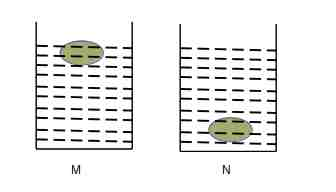
M is salt solution. This is so because the egg in container M is floating which implies liquid inside container M has higher density than the egg and this higher density is due to salt solution.
3.
Write any two reasons that the use of hydroelectricity is increasing in the present world.
The use of hydroelectricity is increasing in the present world because of following reasons:-
a) Renewable source of energy :-
b) Eco-friendly :- Generation of energy from hydoelectricity doesn't have any adverse effect on environment unlike fossils fuel and nuclear energy generator.
c) Economic :- Although its capital investment is large, in long run its use seems to be cheaper.
4.
Three liquids 'P', 'Q' and 'R' of equal masses are kept in the same type of container and placed in the sun for 40 minutes. The increase in temperatures are given in the table.
| Liquid | Increased Temperature |
|---|---|
| P | 19oC |
| Q | 25oC |
| R | 21oC |
a) Which liquid has the highest specific heat capacity? Why?
b) If equal mass of all three liquids at same temperature are cooled, which one will cool down faster? Why?
a) Liquid P has the highest specific heat capacity.
From heat equation, Q = m.s.dt
s = Q/(m.dt)
As Q and m are same for every liquids, 's' ∝ 1/dt.
Liquid P has the lowest value of change in temperature(dt) hence it has the highest specific heat capacity.
b) Liquid Q will cool down most fastly.
Specific heat capacity, s ∝ 1/dt.
'dt' is the highest for liquid Q which implies it has the lowest value of 's'.
As liquid Q has the lowest value of s it will cool down fastly.
5.
Write down any two differences between short sightedness and long sightedness.
The differences between short sightedness and long sightedness are as follows:-
| Short sightedness(Myopia) | Long sightedness (Hypermetropia or Hyperopia) |
|---|---|
| Near vision is clear. | Near vision is blur. |
| Far vision is blur. | Far vision is clear. |
| Causes | |
| Elongation of eye ball. Or, Cornea becomes more curved than normal resulting in decrease in the focal length. |
Shortening of eye ball. Or, Cornea becomes less curved than normal resulting in increase in the focal length. |
| Remedy | |
| This defect can be overcome by putting on spectacles of concave lens of suitable power. | This defect can be overcome by putting on spectacles of convex lens of suitable power. |
6.
Write chemical reaction between calcium and sulphuric acid. Mention the chemical reaction.
Ca + H2SO4 → CaSO4 + H2↑
This is a single displacement reaction.
7.
Write any two chemical properties of acids with formula.
Chemical properties of acids are as follows:-
i) Acid reacts with base to give salt and water.
H2SO4 + 2NaOH → Na2SO4 + 2H2O
ii) Acid reacts with alkali and alkaline earth metals to give salt and hydrogen.
H2SO4 + Ca → CaSO4 + H2↑
iii) Acid reacts with carbonates and bicarbonates to give salt, water and carbon dioxide.
2HCl + Na2CO3 → 2NaCl + H2O + CO2↑
8.
Gold is found in pure state in nature but not the iron, why?
Gold is a noble element that means it does not not react with other element that is why it is found in pure state while iron is a reactive element, it reacts with water and moisture forms various other compounds, hence it is not found in pure state in nature.
9.
Write any two differences between soap and detergent.
The differences between detergents and soaps are as follows:-
| S.N. | Detergents | Soaps |
|---|---|---|
| 1. | Detergents are made from synthetic ingredients. | Soaps are made from natural ingredients. |
| 2. | Detergents’ solubility is greater than soaps. | Soaps’ solubility is lower than detergents. |
| 3. | Detergents don’t give scum in hard water. | Soaps give scum in hard water. |
| 4. | Detergents can be anionic, cationis, non-ionic or amphoteric. | Soaps are anionic washing agents. |
| 5. | Detergents biodegradability varies widely. Some detergents are not biodegradable. Linear chain detergents are more likely to undergo biodegradability. | Soaps are biodegradable. |
| 6. | Detergents are alkali salts of long-chain alkyl sulfonic acids or alkyl amines or alkyl glycol ether. | Soaps are alkali salts of long-chain alkyl carboxylic acids. |
| 7. | Hydrophilic parts of detergents are those groups which form soluble salt in hard water. | Hydrophilic parts of soaps are carboxylic groups which give scum in hard water. |
| 8. | Raw materials:- Petroleum products | Raw materials:- Animal or plants fat and Caustic alkali. |
| 9. | Examples of detergent compounds:- Sodium Lauryl Sulphate, Sodium Laureth Sulphate, Ammonium Lauryl Sulphate, Lauryl Trimethyl Ammonium Chloride, Lauryl Polyglycol Ether Cocamidopropyl betaine C19H38N2O3 etc | Examples of soap compounds:- C₁₅H₃₁COONa ( Sodium palmitate salt) C₁₆H₃₃COONa (Sodium margarate salt) C₁₇H₃₅COONa (Sodium stearate salt) C₁₇H₃₅COOK (Potassium stearate) etc |
| 10. | Detergents come in various form like cake, powder, liquid, gel, paste | Soaps usually come in the form of solid cake. |
| 11. | Applications:- Floor cleaner Hand wash Shampoo Laundry detergent Tooth paste Germicidal | Applications:- Washing clothes soaps Toilet soaps for body cleaning |
| 12. | Detergents have been used by humans since the 20th century. | Humans have been using soaps for thousands of years. |
Detergent Vs Soap Main Article
10.
If 'A' and 'B' are fertilized and unfertilized eggs respectively. Which type of honey bee is developed from B? Also write one function of such bee.
Male bee(Drone bee) is developed from B.
Male bee mates with the queen bee.
11.
A male has larger breast than a normal male and he is suffered by infertility. What type of chromosomal disorder is it? Also write one cause of it.
This is Klinefelter syndrome.
This is due to an extra copy of the X-chromosome.
Or,
It is either due to mating of an abnormal sex chromosome of an egg(XX) with a normal sex chromosomes of a sperm(Y) or due to mating of a normal sex chromosome of an egg(X) with an abnormal sex chromosomes of a sperm(XY). Such egg-sperm mating gives zygote with 3 sex chromosomes having two X sex-chromosomes and one Y sex-chromosomes.
12.
Write two importances of tissue culture.
Some importances of tissue culture are as follows:-
(i) Micropropagation:- Large amount of new plantation can be done in a short period.
(ii) Uniform product:- Plants grown using tissue culture yield uniform product.
(iii) High quality planting material:- As tissue culture is carried out in a controlled artificial environment such planting materials are very much safe from pathogen and disease attack.
13.
"Environmental pollution would not occur if there were no existence of human beings on the earth." Explain.
This is we human beings who uses fossil fuel and are responsible for the carbon emission. The net carbon footprint of othe living beings is zero. Our desire for industrialization and urbanization has led to the drastic degradation in environment. We exploited the natural resources and uses them without balancing the nature.
14.
Write any two effects of ozone layer depletion.
Effects of ozone layer depletion are as follows:-
(i) Global warming,
(ii) Human beings are likely to suffer from skin diseases, cancer, cataract(मोतियाबिंद ), etc
(iii) Animals are also likely to face health issue like human beings.
Group C
6 × 3 = 18
15.
If a man has mass of 60 kg on the surface of the earth, what will be the mass on the surface of the moon? If your weight is 400N on the earth's surface, how far should you go from the earth's surface so your weight becomes one fourth? (Radius of the earth= 6400km)
If a man has mass of 60 kg on the surface of the earth, his mass on the surface of the moon will also be 60 kg.
Solution
Given
Weight at the surface of earth, W0 = 400N
Distance from the center of the earth, d0 = radius of earth = 6400 km
New weight, W1 = (400)/4N = 100N
New distance from the center of the earth, d1 = 6400km + h
Weight of a body is inversely proportional to the distance from the center of the earth.
W ∝
| 1 |
| d2 |
Let k be a constant.
W =
| k |
| d2 |
So,
W0 =
| k |
| (6400 km)2 |
W1 =
| k |
| (6400 km + h)2 |
Now divide W0 by W1
| W0 |
| W1 |
=
| (6400 km + h)2 |
| (6400 km)2 |
| 400 |
| 100 |
=
| (6400 km + h)2 |
| (6400 km)2 |
4 =
| (6400 km + h)2 |
| (6400 km)2 |
Or, 4(6400 km)2 = (6400 km + h)2
Or, 22(6400 km)2 = (6400 km + h)2
Or, (2 * 6400 km)2 = (6400 km + h)2
Removing square from both sides, we get
Or, 12800 km = 6400 km + h
∴ h = 12800 km - 6400 km = 6400 km
Hence, we should go 6400 km away from the Earth's surface to get 1/4th of our weight at the Earth's surface.
16.
Draw a ray diagram of an image formed when object is placed at a distance 20cm from a convex lens having focal length 20cm. Also calculate the magnification of image formed by that lens.
Ray diagram of image is drawn below:-
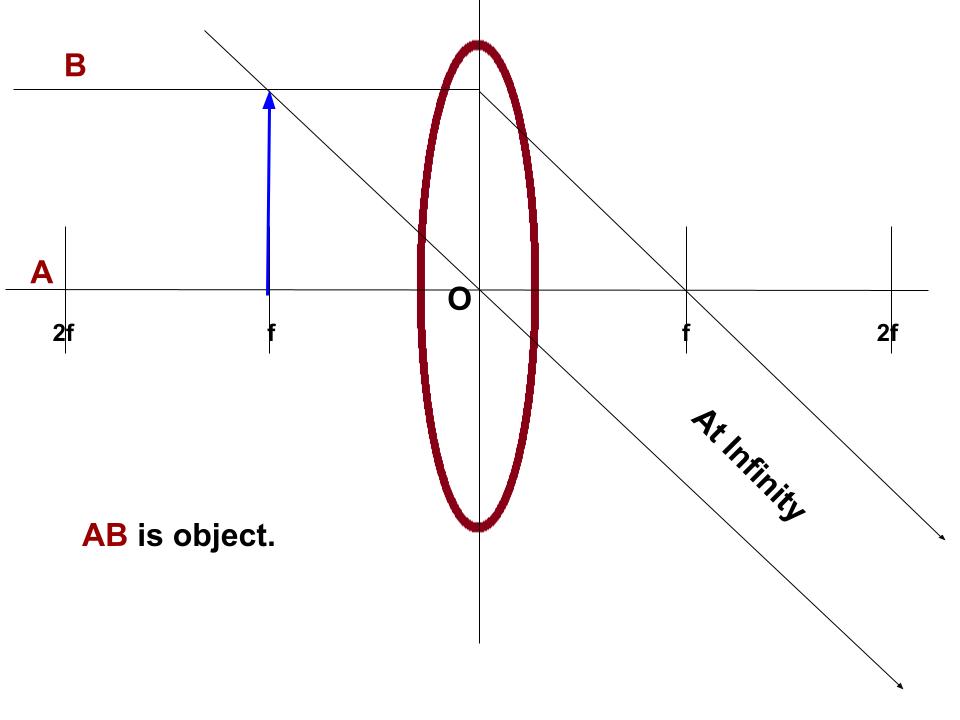
Magnification of the image:-
Object distance, u = 20 cm
Image distance, v = ∞
Magnification, m = v/u = ∞/20 = ∞
The image formed is infinitely magnified.
17.
Write any three characteristics of modern periodic table.
Three characteristics of modern periodic table are:-
• There are 18 groups in the modern periodic table.
• Elements are arranged on the basis of increasing atomic number.
• All the elements in a group have same valency.
• As we move from left to right in a period, the metallic character of elemnts decrease.
18.
Write down the structural formula of the alkyne having four carbons. Name the hydrocarbon formed by reacting above hydrocarbon with sufficient hydrogen. Also write one use of the newly formed hydrocarbon.
Structural formula of Butyne
| H | H | |||||||||
|---|---|---|---|---|---|---|---|---|---|---|
| | | | | |||||||||
| H | ─ | C | ☰ | C | ─ | C | ─ | C | ─ | H |
| | | | | |||||||||
| H | H |
When butyne is reacted with sufficient hydrogen butane is formed.
Usages of butane are as follows:-
i) Butane is used as LP gas.
ii) Butane is used as a key ingredient of synthetic rubber.
iii) Butane is used as a propellant in aerosol sprays such as deodorants.
19.
Draw the structure of human brain and show cerebrum, cerebellum and brain stem.

20.
If the monohybrid cross between black male cat and brown female cat takes place, all the offspring of F1- generation were black. Why were brown offspring not seen in F1 generation? Show this process with the help of chart up F2-generation. Also write genotype and phenotype ratio.
In F1- generation only black offspring were seen but not brown spring because black is dominant character while brown is a recessive character. And in F1- generation only dominant character is seen.
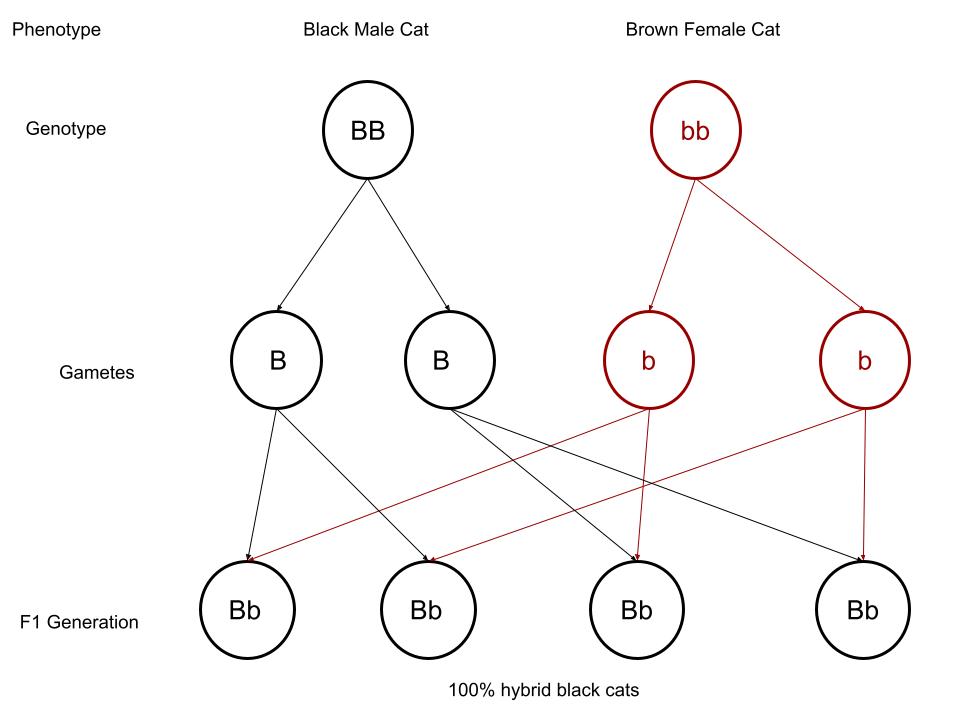
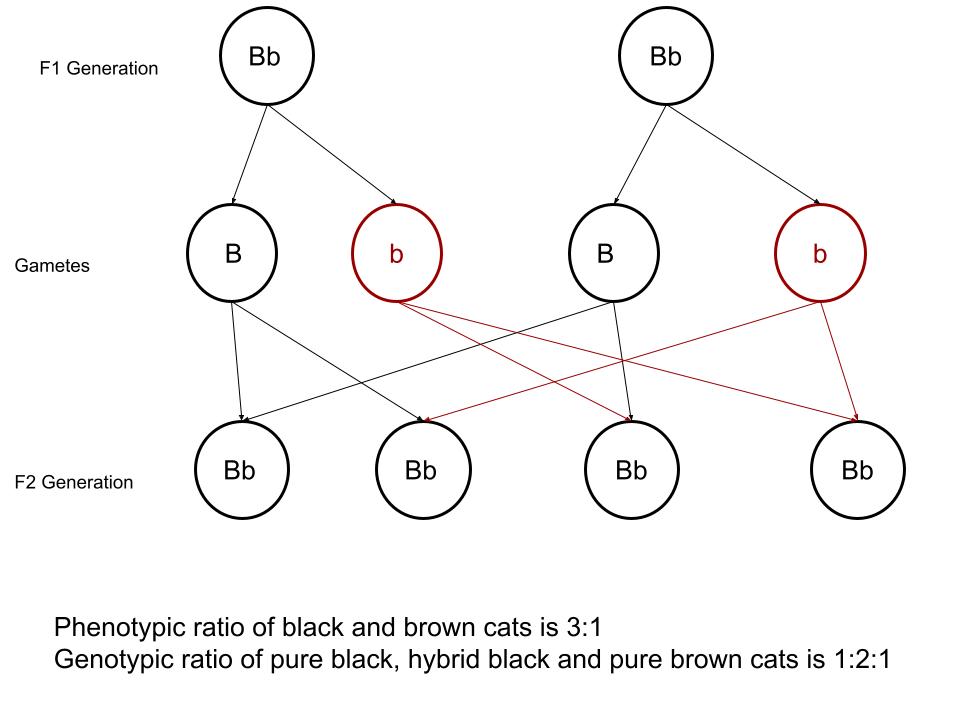
Group D
4 × 4 = 16
21.
Draw a neat and labelled figure of step-down transformer. Ten electric bulbs of 60 watts are used for 6 hours and 2 heaters of 2 KW are used for 2 hours daily. Calculate the total consumption of electricity for a month.
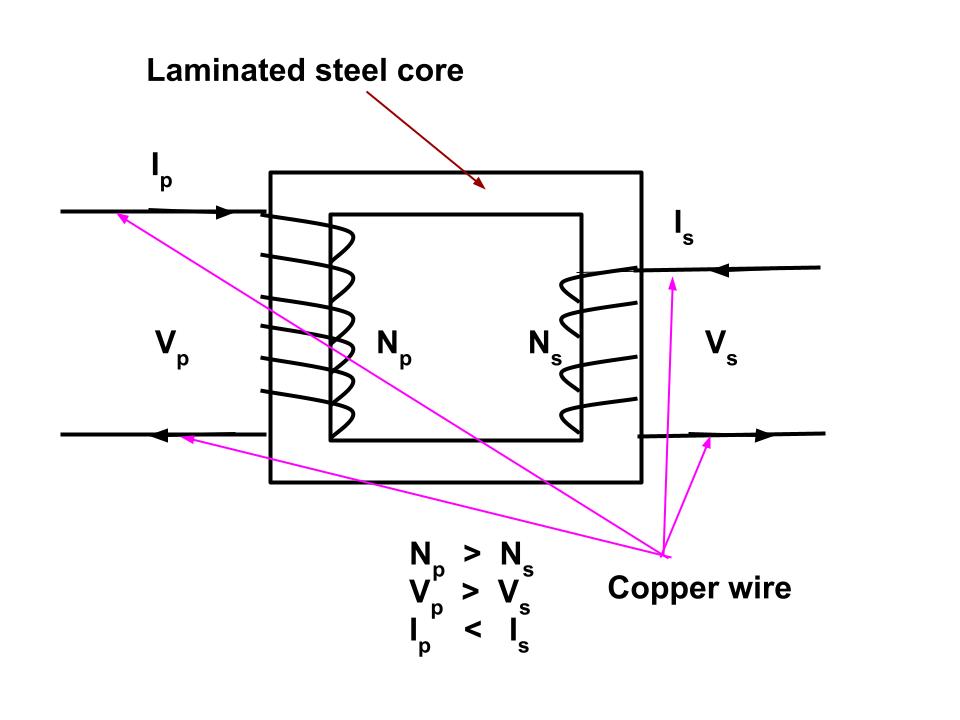
Energy consumed by 10 bulb per day = 10 * 60 watt * 6 hour = 3600 watt-hour
Energy consumed by 10 bulb in a month = 3600 * 30 watt-hour = 108000 watt-hour = 108 KWH
Energy consumed by 2 heaters per day = 2 * 2 KW * 2 hour = 8 KWH
Energy consumed by 2 heaters in a month = 8 KWH * 30 = 240 KWH
Total energy consumption = 108 KWH + 240 KWH = 348KWH
Total consumption of electricity for a month is 348 KWH.
Or, (In short)
Total consumption of electricity for a month = 30(10 * 60 watt * 6 Hour + 2 * 2 KW * 2 Hour)
= 30(3600 watt-hour + 8 KWH)
= 30(3.6 KWH + 8 KWH)
= 30(11.6 KWH)
= 348 KWH
Total consumption of electricity for a month is 348 KWH.
22.
Write short notes on:
a) Pulmonary Circulation
b) Diabetes
Pulmonary Circulation :-
Pulmonary circulation transports oxygen-poor blood from the right ventricle to the lungs, where blood picks up a new blood supply. Then it returns the oxygen-rich blood to the left atrium. The pump for the pulmonary circulation, which circulates blood through the lungs, is the right ventricle.
Diabetes :-
Diabetes is a chronic (long-lasting) health condition that affects how your body turns food into energy.
Most of the food you eat is broken down into sugar (also called glucose) and released into your bloodstream. When your blood sugar goes up, it signals your pancreas to release insulin. Insulin acts like a key to let the blood sugar into your body’s cells for use as energy.
If you have diabetes, your body either doesn’t make enough insulin or can’t use the insulin it makes as well as it should. When there isn’t enough insulin or cells stop responding to insulin, too much blood sugar stays in your bloodstream. Over time, that can cause serious health problems, such as heart disease, vision loss, and kidney disease.
There isn’t a cure yet for diabetes, but losing weight, eating healthy food, and being active can really help. Taking medicine as needed, getting diabetes self-management education and support, and keeping health care appointments can also reduce the impact of diabetes on your life.
Types of diabetes:-
There are three main types of diabetes: type 1, type 2, and gestational diabetes (diabetes while pregnant).
Diabetes Symptoms :-
• Urinate (pee) a lot, often at night
• Are very thirsty
• Lose weight without trying
• Are very hungry
• Have blurry vision
• Have numb or tingling hands or feet
• Feel very tired
• Have very dry skin
• Have sores that heal slowly
• Have more infections than usual
23.
Draw a clean diagram of laboratory preparation of ammonia gas and label the lime tower and gas jar. Also write the balanced chemical equation of the reaction involved in this process.
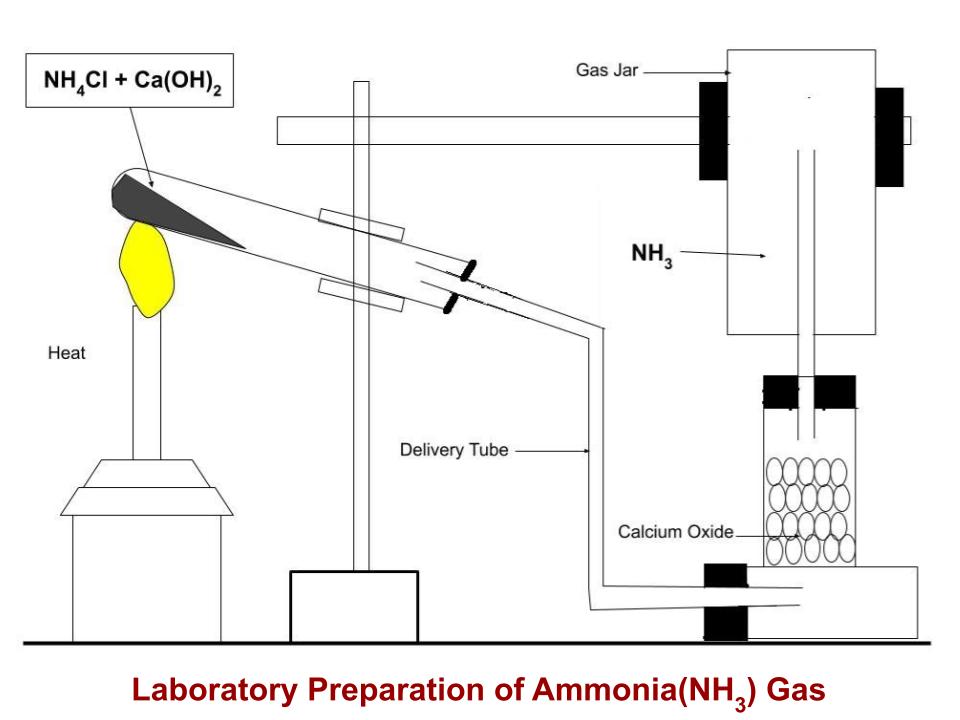
The balanced chemical equation is:-
2NH4Cl + Ca(OH)2 → CaCl2 + 2H2O + 2NH3↑
24.
Explain the process of formation of mineral oil with suitable figure and write any two applications of it.
Minerals oils are formed in nature and it takes millions of years long process. They are formed from dead body of microorganism deposited and piled-up at a place inside seas and oceans. Formation of mineral oil can be summed up in following points:-
Microorganism living millions of years ago died.
Bacteria decayed those dead bodies.
These decayed bodies get covered by various layers of sand and soil.
Due to exposure to pressure and temperature over long period sand and soil piled up form an impervious layer of sedimentary rock.
This temperature and pressure is also responsible for conversion of dead remnant of microorganism into mineral oil inside impervious layer of sedimentary rocks.
